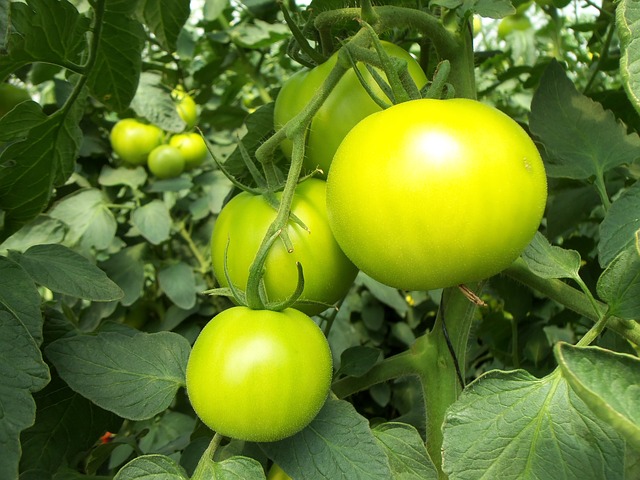It’s that time of year! We have tilled our garden and are seeing the seedlings come through. It’s one of my favorite times of year on the homestead.
We love tomatoes – so that’s pretty much a guaranteed part of our annual planting. Over the years, we’ve learned a thing-or-two about growing successful tomatoes. In this article, I’ll share my five proven steps to grow healthy tomatoes and ensure a bountiful harvest. Our guide covers everything from soil preparation to pruning, watering, and fertilizing.
Let’s Get Started Growing Amazing Tomatoes:
Tomatoes are one of the most popular fruits in the world, enjoyed for their delicious taste, vibrant color, and versatility in cooking. Whether you’re a seasoned gardener or a first-time grower, growing healthy tomatoes requires patience, time, and effort. In this article, we’ll take a closer look at the five proven steps to ensure a bountiful harvest of healthy tomatoes.
Soil preparation
The first step in growing healthy tomatoes is preparing the soil. Tomato plants require nutrient-rich soil that is well-draining and has a pH of 6.0 to 6.8. Test your soil with a soil testing kit to determine its pH level. If the pH is too low, add lime to raise it; if it’s too high, add sulfur to lower it.
To prepare the soil, remove any debris, weeds, and rocks. Add organic matter such as compost, aged manure, or leaf mold to improve soil structure and fertility. Mix the organic matter into the top 6 to 8 inches of soil using a garden fork or tiller.
Selecting the right tomato varieties
The next step in growing healthy tomatoes is selecting the right tomato varieties. There are many types of tomatoes to choose from, including cherry, grape, heirloom, and beefsteak. Consider factors such as the size, flavor, and disease resistance when selecting tomato varieties.
Choose varieties that are well-suited for your region. If you’re a beginner, try growing determinate varieties that are more compact and easier to manage. Indeterminate tomatoes, on the other hand, grow tall and require staking or support.
Planting and spacing
 Planting and spacing are crucial to growing healthy tomato plants. Tomatoes require full sun and warm temperatures to thrive. Plant tomato seedlings after the last frost date in your region. Water the seedlings thoroughly before transplanting them into the prepared soil.
Planting and spacing are crucial to growing healthy tomato plants. Tomatoes require full sun and warm temperatures to thrive. Plant tomato seedlings after the last frost date in your region. Water the seedlings thoroughly before transplanting them into the prepared soil.
Space the tomato plants based on their mature size. For determinate varieties, space them 2 to 2.5 feet apart. For indeterminate varieties, space them 3 to 4 feet apart. Plant the seedlings deep enough so that only the top 2 inches of the plant is above ground.
Watering and fertilizing
Tomatoes require consistent and adequate watering to grow healthy. Water the tomato plants deeply once or twice a week, depending on the weather and soil moisture level. Avoid overhead watering, as it can lead to fungal diseases.
In addition to watering, fertilizing is essential for growing healthy tomato plants. Apply a balanced fertilizer, such as 10-10-10, before planting and again every three to four weeks during the growing season. Avoid over-fertilizing, as it can lead to excessive foliage growth and poor fruit development.
Pruning and pest management
 Pruning and pest management are the last steps in growing healthy tomatoes. Prune off the side shoots that sprout from the main stem to promote airflow and reduce disease. Pinch off the suckers that grow at the base of the leaves to direct energy to fruit production.
Pruning and pest management are the last steps in growing healthy tomatoes. Prune off the side shoots that sprout from the main stem to promote airflow and reduce disease. Pinch off the suckers that grow at the base of the leaves to direct energy to fruit production.
Tomatoes are susceptible to diseases and pests such as blight, aphids, and tomato hornworms. To prevent and manage diseases and pests, practice good garden hygiene, remove any diseased plant parts, and use organic pest control methods such as neem oil and insecticidal soap.
Conclusion:
Growing healthy tomatoes requires preparation, patience, and some effort, but the rewards are well worth it. By following these five proven steps, you can ensure a bountiful harvest of delicious and nutritious tomatoes. Remember to select the right tomato varieties, prepare the soil, plant and space them properly, water and fertilize them adequately, and manage diseases and pests. Happy gardening!



